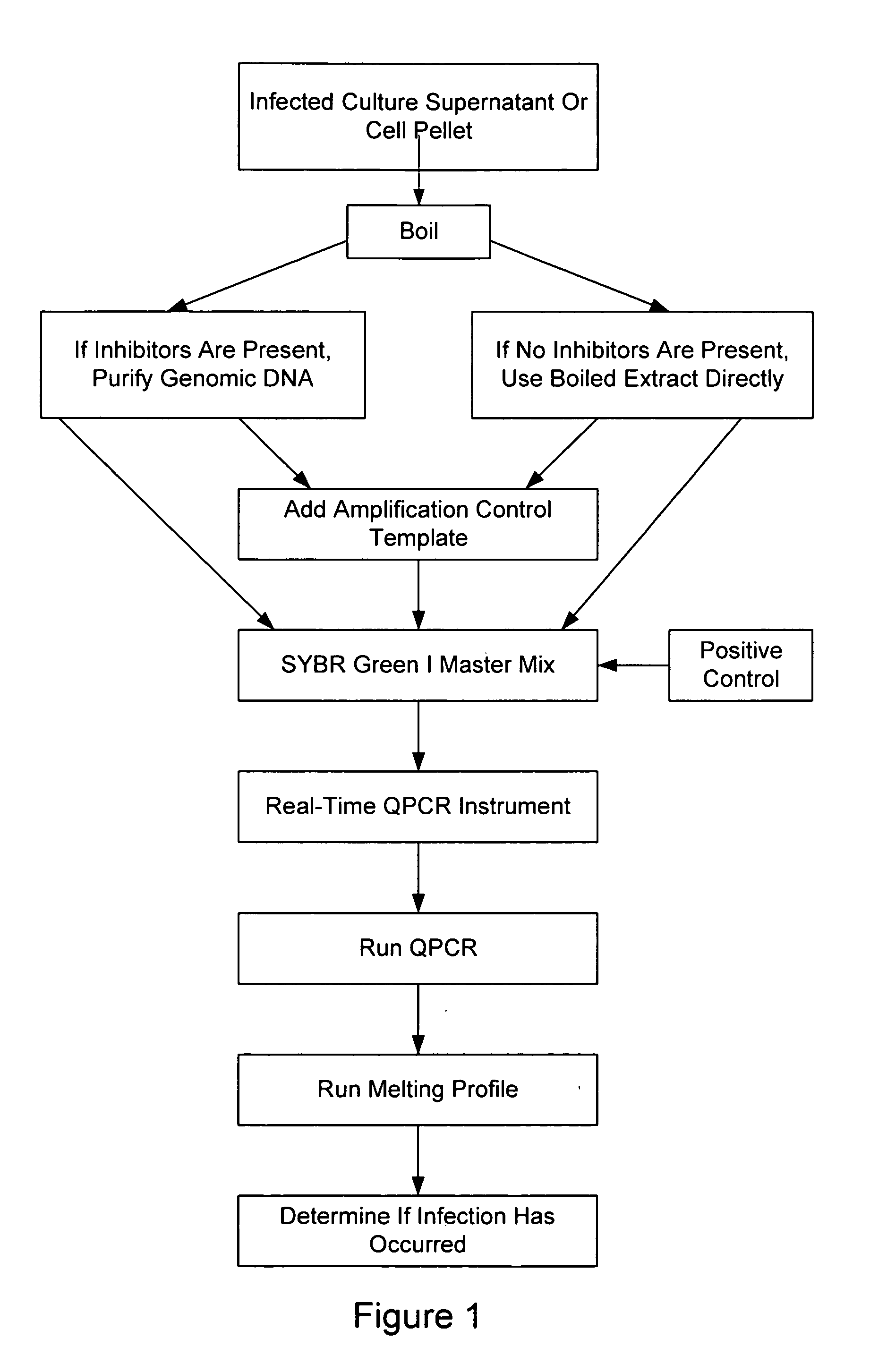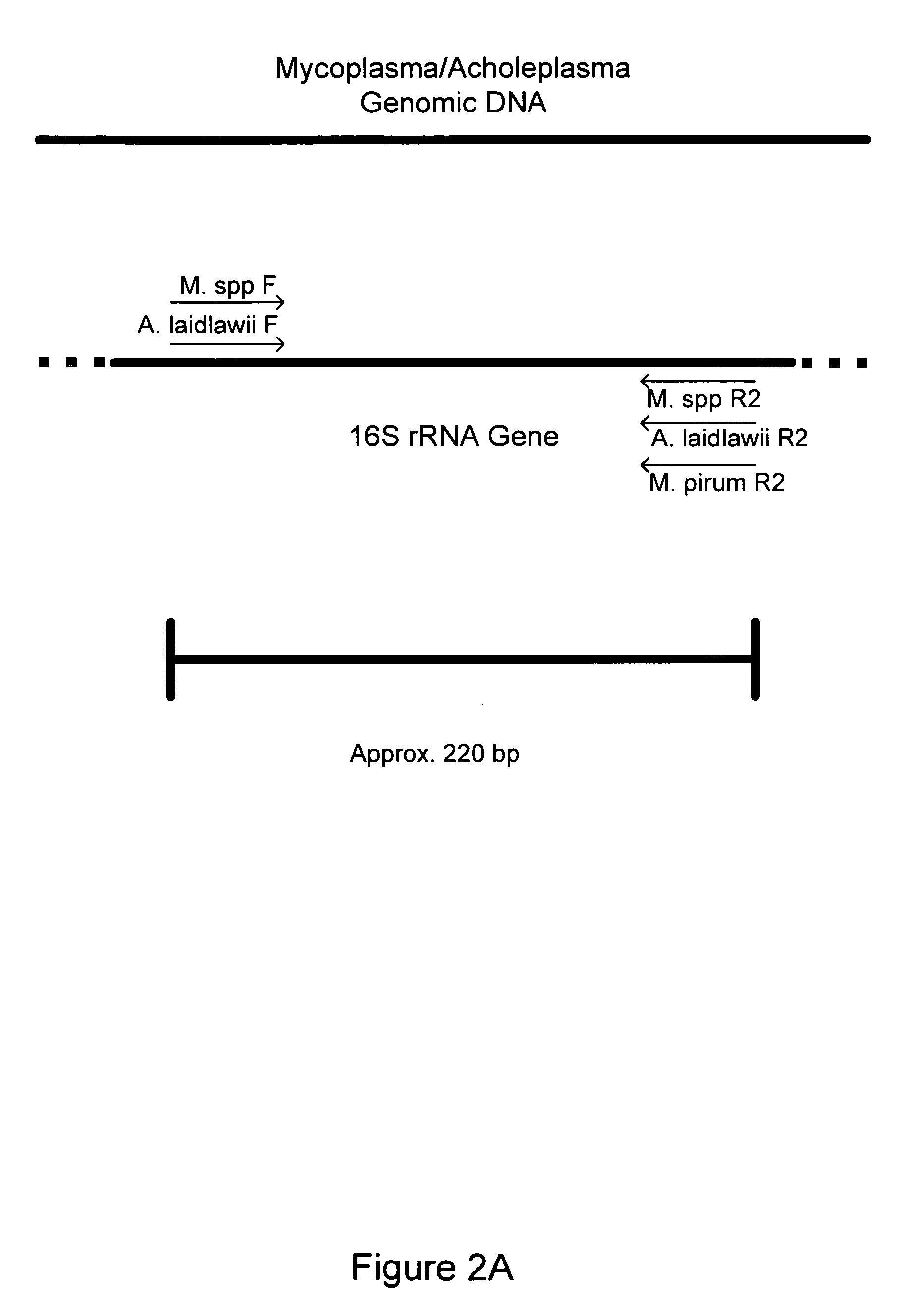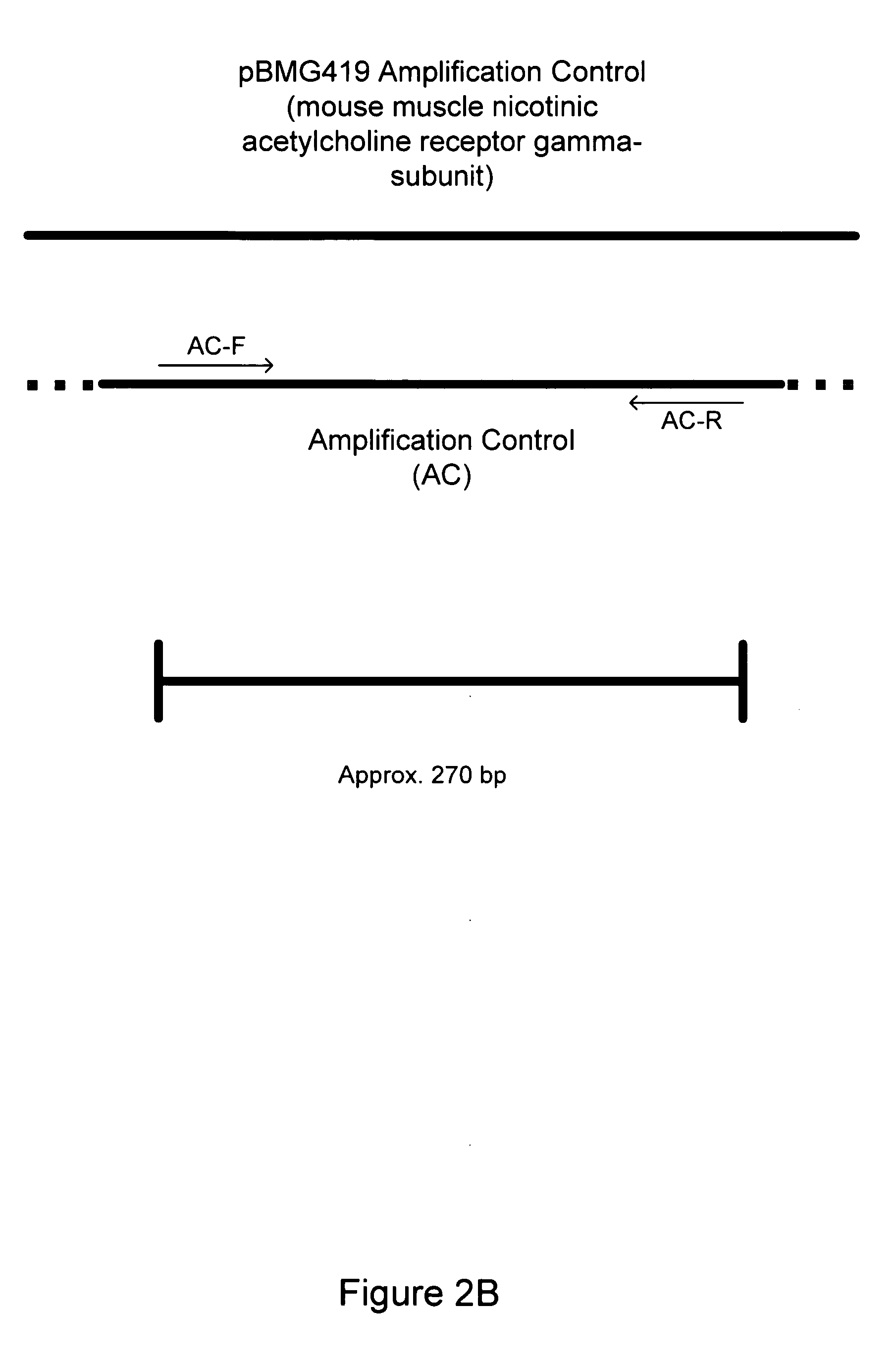Nucleic acids, compositions, methods, and kits for detecting mycoplasma and acholeplasma species
a technology of mycoplasma and acholeplasma, which is applied in the field of nucleic acids, compositions, kits for detecting mycoplasma and acholeplasma species, can solve the problems of unsafe biological products, unsuitable antibiotics, and unreliable experimental results
- Summary
- Abstract
- Description
- Claims
- Application Information
AI Technical Summary
Benefits of technology
Problems solved by technology
Method used
Image
Examples
example 1
Extraction and Purification of Nucleic Acids from Cell Culture Supernatants
[0138] Cell cultures to be assayed for infection by Mycoplasma / Acholeplasma were grown to near confluence. One hundred microliters (100 μl) of the medium was transferred from the cell culture to a microcentrifuge tube. The tube was tightly closed to prevent opening during subsequent steps, particularly the heating step.
[0139] The microcentrifuge tube was incubated in a water bath at 95-100° C. for 5 minutes, then centrifuged for 30-60 seconds at top speed in a microcentrifuge. The supernatant (approx. 100 μl) was transferred to a new microcentrifuge tube.
[0140] One hundred microliters of the DNA-binding solution provided with the StrataPrep® PCR Purification Kit (Catalog # 400771, Stratagene, La Jolla, Calif.) and 200 μl of 70% (v / v) ethanol were added to the supernatant, and the combination was mixed well. StrataPrep Kit #400711 was used, except the spin cup in the kit were replaced by Stratagene Catalog ...
example 2
Extraction and Purification of Nucleic Acids from Cell Pellets
[0146] As discussed above, cell culture supernatants might contain media components that inhibit PCR amplification (e.g., fetal calf serum, metabolic products, antibiotics). This extraction protocol was used when it was desirable to minimize or eliminate such inhibitory components. It has been found that this protocol provides cell-equivalent standardization and a more sensitive detection limit for cell lines whose growth is inhibited by Mycoplasma. This protocol may be used as an alternative to testing cell culture supernatants that may be inhibitory to PCR.
[0147] Cell cultures to be assayed for infection by Mycoplasma / Acholeplasma were grown to near confluence. The cells were harvested by scraping the cells from the plate without prior addition of trypsin. One ml. of scraped adherent cells (100,000 or more cells) were transferred to a microcentrifuge tube and spun at top speed for 10-15 seconds. The supernatant was ca...
example 3
Detection of Eight Different Species of Mycoplasma with One Primer Set
[0157] Eight Mycoplasma or Acholeplasma bacterial strains were obtained as lyophilized preparations from the American Type Culture Collection (ATCC, Manassas, Va.) as follows: Acholeplasma laidlawii (ATCC#23206), Mycoplasma orale (ATCC#29802), M. hominis (ATCC#23114), M. fermentans (ATCC# 19989), M. hyorhinis (ATCC#17981), M. pirum (ATCC#25960), M. salivariuni (ATCC#23064), M. arginini (ATCC#23243). E. coli (ATCC#l 0798) was also obtained for use in determining specificity of the primers. The Mycoplasma / Acholeplasma primer set described in Table 1 was tested for the detection of each of these eight different species of Mycoplasma and E. coli.
[0158] Crude DNA isolation was performed by resuspending lyophilized Mycoplasma bacterial cells in 1 ml of sterile double-deionized (ddI) water, followed by thorough mixing with a aerosol-filtered pipette tip. Resuspension in water ensured hydrolysis of the cells and release...
PUM
| Property | Measurement | Unit |
|---|---|---|
| temperature | aaaaa | aaaaa |
| temperature | aaaaa | aaaaa |
| Tm | aaaaa | aaaaa |
Abstract
Description
Claims
Application Information
 Login to View More
Login to View More - R&D Engineer
- R&D Manager
- IP Professional
- Industry Leading Data Capabilities
- Powerful AI technology
- Patent DNA Extraction
Browse by: Latest US Patents, China's latest patents, Technical Efficacy Thesaurus, Application Domain, Technology Topic, Popular Technical Reports.
© 2024 PatSnap. All rights reserved.Legal|Privacy policy|Modern Slavery Act Transparency Statement|Sitemap|About US| Contact US: help@patsnap.com










